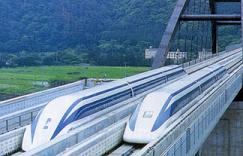Research Questions
This subsection explains which questions we find relevant in our study project. In general, what we wonder and want to know is:
(i) What are the differences and similarities in innovation between Japan and the Netherlands?

Questions about the theme
The theme of the project is ‘innovation’. Innovation is a very hot item in politics nowadays. But what is innovation? A lot of definitions are possible. For instance, does it contain only technological innovation or does it also contain production processes and company organization? Do we mark all new technology products that enter the market as innovative or does the used technology decide whether the product is innovative or not? What has the desire for a 'knowledge-based economy’ to do with it? These possible confusions make it necessary for us to find an answer to the second question:
(ii) What definition of 'technological innovation' is appropriate?
Of course, innovation has a price to be paid. Companies and government are willing to pay that price, but why? Does the market want this or is it just some sort of rivalry between the different companies and governments of different countries? Therefore we wonder:
(iii) What are the benefits of innovation for society and what are its costs?
In our research we will try to compare innovation in Japan with innovation in the Netherlands. But to be able to say which country is better and why, we need to know which aspects of economy and culture are important for innovation and thus which we should focus on in our research. Can we measure innovation based on the number of high-tech products made in a country? Should we measure innovation by comparing the number of scientific articles written in a country or is it better to look at the number of times these articles are cited? Maybe we have to take into account the amount of money spent in Research and Development or the number of employees active in this field. This all gives rise to the next research question:
(iv) How can 'technological innovation' be measured?
Macro-level Questions
If we have answered the last three questions, we think we are ready to start to investigate the differences in the countries. First we look at both countries in general, this is called the macro level. On the macro level we can distinguish the politics, the economy, the social life and technology.
The project window states the desire of governments to have their country belonging to the best innovating countries. Here, we also wonder why. To be more specific:
(v) What are important political forces on the national level regarding innovation?
(vi) What are important political forces on the international level regarding innovation?
The paradox in the project window can be read as if it states that the number of high-tech products built in Japan is higher than in the Netherlands. These products are made by the industry of each country. We should evaluate whether this is true and it gives rise to the following two research questions:
(vii) What are important differences and similarities on the national level between the Japanese and Dutch economy and industry, and what consequences does this have regarding innovation?
(viii) What are important differences and similarities on the international level between the Japanese and Dutch economy and industry, and what consequences does this have regarding innovation?
An obvious difference between Japan and the Netherlands is culture. For instance, the working culture in the countries is very different. Thus the technology products are invented and built in a different way. This is a very obvious example of how the culture influences innovation of technology products. In extent to this, the next research question is:
(ix) How do (socio-)culture differences between Japan and the Netherlands influence innovation?
When we say innovation, people almost immediately think of research, development and high-tech products. When we say ‘Japan’ most people have a picture of small people copying western technology products and sell it for a low price. This is only one example of a difference between technology in both countries. More general, the question becomes:
(x) What are the differences between the Japanese and Dutch technology industry and what does this mean regarding innovation?

Meso-level Questions
After answering these macro-level questions, it will be time to take a look at the different sectors of industry. In this part of the research, we will focus on the role of electrical engineering in industry since we will become Electrical Engineers. We think that the following sectors of industry should have our special interest:
- Automotive industry
- Medical industry
- Consumer products
- Telecommunication industry
- Industrial applications
- Remote sensing application industry
In the process of research and development, R&D departments of companies are active as well as universities and institutes. R&D plays undoubtedly an important role in the innovation process. So the first thing we wonder on the meso-level is:
(xi) How do companies, universities and research institutes interact in a certain sector?
Furthermore, as electrical engineers, we are interested on what fields of Electrical Engineering innovation takes place in a certain sector. We distinguish five different fields within Electrical Engineering, just like our faculty does. These fields are:
- Microsystems and micro-electronics
- Biomedical systems
- Embedded systems
- Telecommunication systems and networks
- Measurement and control systems
This leads to the second meso-level research question:
(xii) Which fields of Electrical Engineering are of interest in the different sectors and what are hot innovation topics in that sector?
The questions regarding the theme and both the macro and meso-level form the base of the preliminary report.
Micro-level Questions
Once we have done our preliminary study, it will be time to visit companies, universities and research institutes to check whether what we found out is true or not, and why. This leads to the question we will try to answer in our micro-level research:
(xiii) Do the companies, universities and research institutes we visited indeed innovate for the reasons, in the way and on the subjects we found in our preliminary study?
Now we have formulated all questions, we should be able to answer the general research question which was stated on top of this page. Both the micro-level research and the answers on the general research question form our final research.
Created on 01/20/2004 05:37 PM by Siebeb
Updated on 03/26/2004 04:47 PM by Siebeb
|

|
|


 日本語版
日本語版







